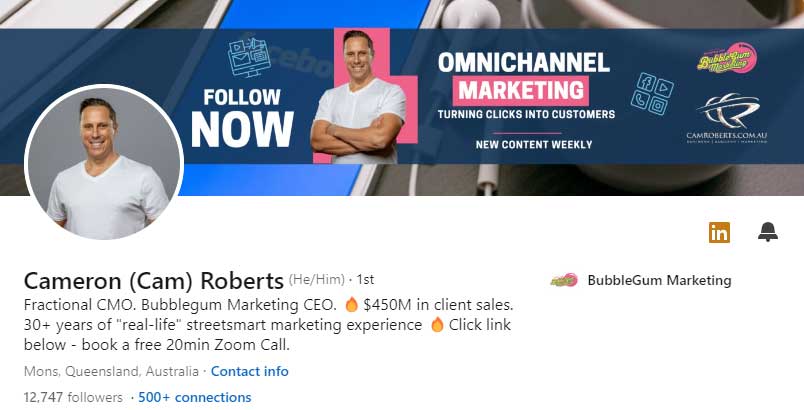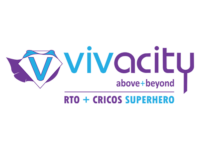Crafting an Effective Social Media Strategy
By Cameron Roberts – Founder & CEO of Bubblegum Marketing,
Posted On March 26, 2025
A social media strategy is more than just posting updates on your company’s profiles. It’s a comprehensive plan that outlines your business goals and how social media can help achieve them. Having a clear plan helps you align your efforts with your goals. This makes your social media use more effective and efficient.

Aligning Social Media with Business Goals
To start, it’s important to integrate your social media strategy with your broader business objectives. Whatever your goals are, like selling more, helping customers, or improving your brand, your work on social media should help with these goals.
This alignment ensures that your social media activities contribute meaningfully to your overall business success.
Building a Brand Voice
Your social media strategy should also focus on developing a consistent brand voice. This involves deciding on the tone and style of your content to ensure it reflects your brand’s personality. A strong, recognizable brand voice helps differentiate your business from competitors and creates a cohesive experience for your audience.
Establishing Key Performance Indicators (KPIs)
Once your goals are clear, establish KPIs to measure success. These are quantifiable measures that will help track your progress. For example, you might track metrics such as audience growth, engagement rates, and conversion rates. Regularly reviewing these KPIs can help you adjust your strategy to better meet your objectives.
Setting Clear Goals
Before diving into content creation, it’s essential to set clear goals for your social media efforts. These goals should be specific, measurable, achievable, relevant, and time-bound (SMART). Common social media goals include increasing brand awareness, driving website traffic, generating leads, and boosting engagement.
Defining Your Brand’s Unique Value Proposition (UVP)
Your social media goals should be rooted in your brand’s unique value proposition. What sets your business apart from others?
By defining your unique value proposition (UVP), you can set social media goals that showcase what makes you special. This will help draw in and keep your target audience.
Prioritizing Goals for Maximum Impact
It’s important to prioritize your social media goals to ensure focus and effective resource allocation. Determine which goals will have the most significant impact on your business and allocate your efforts accordingly. This prioritization helps in managing time and resources effectively, ensuring that your social media strategy delivers tangible results.
Setting Realistic and Attainable Goals
While ambition is important, setting realistic and attainable goals is crucial for sustained success. Consider your current resources, audience size, and market conditions when setting your goals. This approach helps prevent burnout and ensures that your social media strategy remains actionable and impactful over time.

Choosing the Right Platforms
Not all social media platforms are created equal. Each platform has its unique audience and type of content that performs best. Here’s a quick overview:
- Facebook: Ideal for reaching a broad audience with a mix of content types, including text, images, and videos.
- Instagram: Focuses on visual content and is popular among younger audiences.
- Twitter: Best for real-time updates and engaging in conversations.
- LinkedIn: Perfect for B2B marketing and professional networking.
- Pinterest: Great for sharing visual content related to hobbies, crafts, and lifestyle.
Choose platforms that align with your business goals and target audience.
Conducting Platform-Specific Research
Before committing to a platform, conduct thorough research to understand its demographics and content trends. Analyze how competitors and industry leaders use each platform. This research shows what content does well and how to make your brand stand out on the platform.
Evaluating Platform Features and Tools
Each social media platform offers unique features and tools that can enhance your marketing efforts. Evaluate these features to determine which ones align with your strategy. For example, Instagram Stories are good for showing behind-the-scenes content. LinkedIn articles are great for sharing expert ideas.
Testing and Iterating on Platform Choices
Choosing the right platforms is not a one-time decision. Continuously test and iterate on your platform choices based on performance data. If a platform isn’t delivering the expected results, consider adjusting your approach or reallocating resources to more effective platforms. This adaptive strategy helps maximize your social media ROI.

Crafting Compelling Content
Content is the heart of any social media strategy. To engage your audience, you need to create content that is valuable, relevant, and consistent. Here are some tips:
Types of Content
- Educational Content: Share tips, how-tos, and informative articles that provide value to your audience.
- Entertaining Content: Use humor, stories, or interactive content like quizzes and polls to engage followers.
- Inspirational Content: Share quotes, success stories, or motivational posts that resonate with your audience.
- Promotional Content: Announce sales, new products, or special offers to drive conversions.
Creating a Content Calendar
A content calendar is a strategic tool that helps plan and organize your content. It allows you to schedule posts in advance, ensuring a consistent posting rhythm. Additionally, a content calendar enables you to plan for holidays, product launches, and other significant events, ensuring your content remains timely and relevant.
Leveraging User-Generated Content
User-generated content (UGC) can be a powerful addition to your content strategy. Encourage your audience to share their experiences with your brand, and feature their content on your profiles. UGC not only boosts engagement but also builds community and trust, as real customer experiences are often more relatable and credible.
Utilizing Multimedia Content
Incorporate a variety of multimedia content, such as videos, infographics, and live streams, to keep your audience engaged. Different types of media can cater to different preferences and learning styles, ensuring broader reach and impact. Experiment with various formats to discover what resonates most with your audience.
Engaging with Your Audience
Social media is a two-way street. Engaging with your audience is essential for building relationships and fostering loyalty. Respond to comments, messages, and mentions promptly. Encourage conversations by asking questions and inviting feedback.
Creating a Community Around Your Brand
Fostering a sense of community can deepen your audience’s connection to your brand. Create spaces, such as groups or forums, where your audience can interact with each other and your brand. This community-centric approach can enhance loyalty and encourage organic advocacy.
Encouraging User Interaction
Prompt user interaction by including calls-to-action (CTAs) in your posts. Encourage users to like, comment, share, or tag friends. These interactions increase your content’s visibility and strengthen the relationship between your brand and its audience, creating a more engaged community.
Managing Negative Feedback
Negative feedback is inevitable, but how you handle it can significantly impact your brand’s reputation. Address concerns promptly and professionally, and use criticism as an opportunity to improve. This proactive approach demonstrates your commitment to customer satisfaction and can turn critics into advocates.
Analyzing and Adjusting Your Strategy
Regular analysis of your social media performance is crucial for identifying what’s working and what needs improvement. Use analytics tools provided by each platform to track key metrics like engagement, reach, and conversions.
Using Advanced Analytics Tools
Beyond platform-native analytics, consider using advanced tools like Google Analytics, Hootsuite, or Sprout Social. These tools offer deeper insights into your social media performance, helping you identify trends, optimize content, and make data-driven decisions that enhance your strategy.
Conducting A/B Testing
A/B testing is a valuable method for refining your social media strategy. Test different content formats, headlines, or posting times to see what resonates best with your audience. This iterative process allows for continual improvement and more effective content delivery.
Iterating on Your Strategy
Based on your analysis, regularly iterate on your strategy to keep it aligned with changing market dynamics and audience preferences. Flexibility and adaptability are key to maintaining a relevant and impactful social media presence in an ever-evolving digital landscape.

Staying Up-to-Date with Trends
Social media is constantly evolving, with new trends and features emerging regularly. Stay informed by following industry blogs, attending webinars, and participating in online communities. Adapting to new trends can help keep your strategy fresh and engaging.
Leveraging Emerging Technologies
Stay ahead of the curve by leveraging emerging technologies such as augmented reality (AR), virtual reality (VR), and artificial intelligence (AI) in your social media strategy. These technologies can create immersive experiences that captivate your audience and differentiate your brand.
Monitoring Competitor Strategies
Keep an eye on your competitors to understand how they’re responding to industry trends. Analyze their successes and failures to gain insights into effective strategies. This competitive analysis can help inform your own strategy, ensuring you remain competitive in your market.
Fostering a Culture of Continuous Learning
Encourage a culture of continuous learning within your marketing team. Regular training sessions, workshops, and knowledge-sharing initiatives can keep your team informed about the latest trends and best practices. This commitment to learning ensures your strategy remains innovative and effective.
.
📸 Get daily marketing inspiration! Follow me on Instagram for expert tips, behind-the-scenes insights, and proven strategies to grow your business.
Conclusion
Crafting an effective social media strategy requires careful planning, creativity, and ongoing evaluation. By setting clear goals, understanding your audience, and creating engaging content, you can harness the power of social media to achieve your business objectives. Remember, social media is a dynamic and ever-changing landscape, so stay flexible and open to experimenting with new tactics and platforms.
By following these tips, you’re on the right track to creating a social media strategy that delivers results and enhances your digital marketing efforts. Alternatively, you can partner with a digital marketing agency for expert support. Happy posting!
WANT TO BE OUR NEXT SUCCESS STORY?
Book a Free Consult
Schedule a 15-minute Free Consultation via Zoom meetings with our Director, Cam Roberts by clicking the button below now:
Recent Articles
- Why Your Email Click Rates Look Low in 2025
- How Our eCommerce Marketing Agency Drove 121% Growth
- What Is Google BARD? A Guide to Google’s New AI
- Facebook Ads Budgeting & Strategies for 2025
- Top Marketing Strategies from Fortune 500 Companies
- Weird & Wonderful: Things Google Probably Doesn’t Want You to Know
- Top 7 Mistakes Businesses Make Without a Facebook Ads Specialist
- Why Automated Sales Funnels Are a Game-Changer for Small Businesses
- How to Choose the Right Facebook Ads Agency in 2025
- Social Media Advertising Trends 2025 for Business Growth
Request A Quote
Request A Quote for your next Website or Funnel Project below:










































